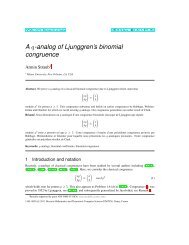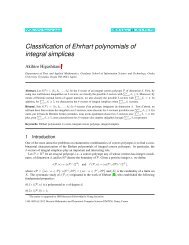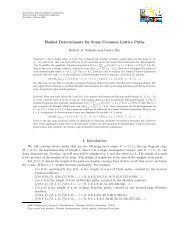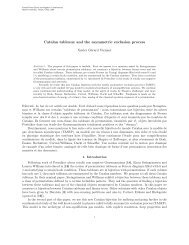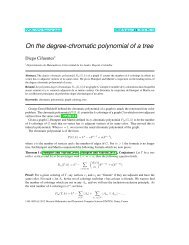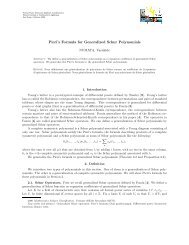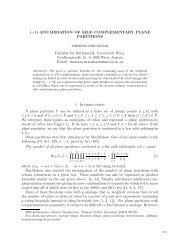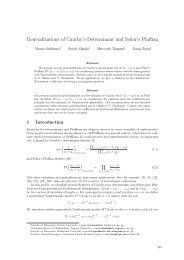Euler's partition theorem and the combinatorics of -sequences
Euler's partition theorem and the combinatorics of -sequences
Euler's partition theorem and the combinatorics of -sequences
You also want an ePaper? Increase the reach of your titles
YUMPU automatically turns print PDFs into web optimized ePapers that Google loves.
Theorem [Fraenkel 1985] Every nonnegative integer has a unique<br />
(up to leading zeroes) representation as an l-ary string which does<br />
not contain <strong>the</strong> pattern<br />
(l − 1) (l − 2) ∗ (l − 1).<br />
Pro<strong>of</strong> Show that<br />
is a bijection<br />
f : b n b n−1 . . . b 1<br />
−→<br />
n∑<br />
b i a i<br />
i=1<br />
f : T (l)<br />
n<br />
−→ {0, 1, 2, . . . a (l)<br />
n+1 − 1}.<br />
The l-representation <strong>of</strong> an integer x is<br />
[x] = f −1 (x).



